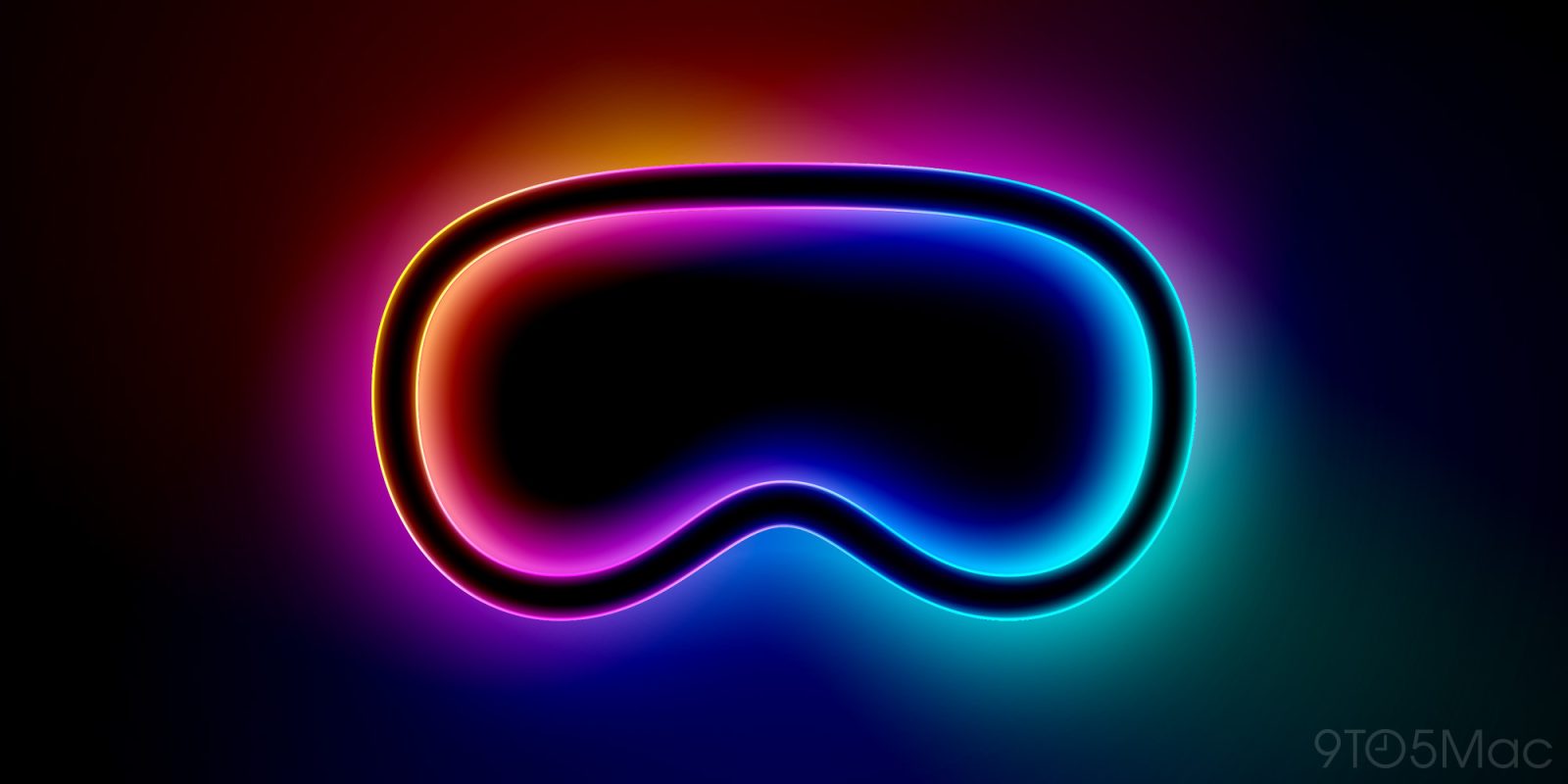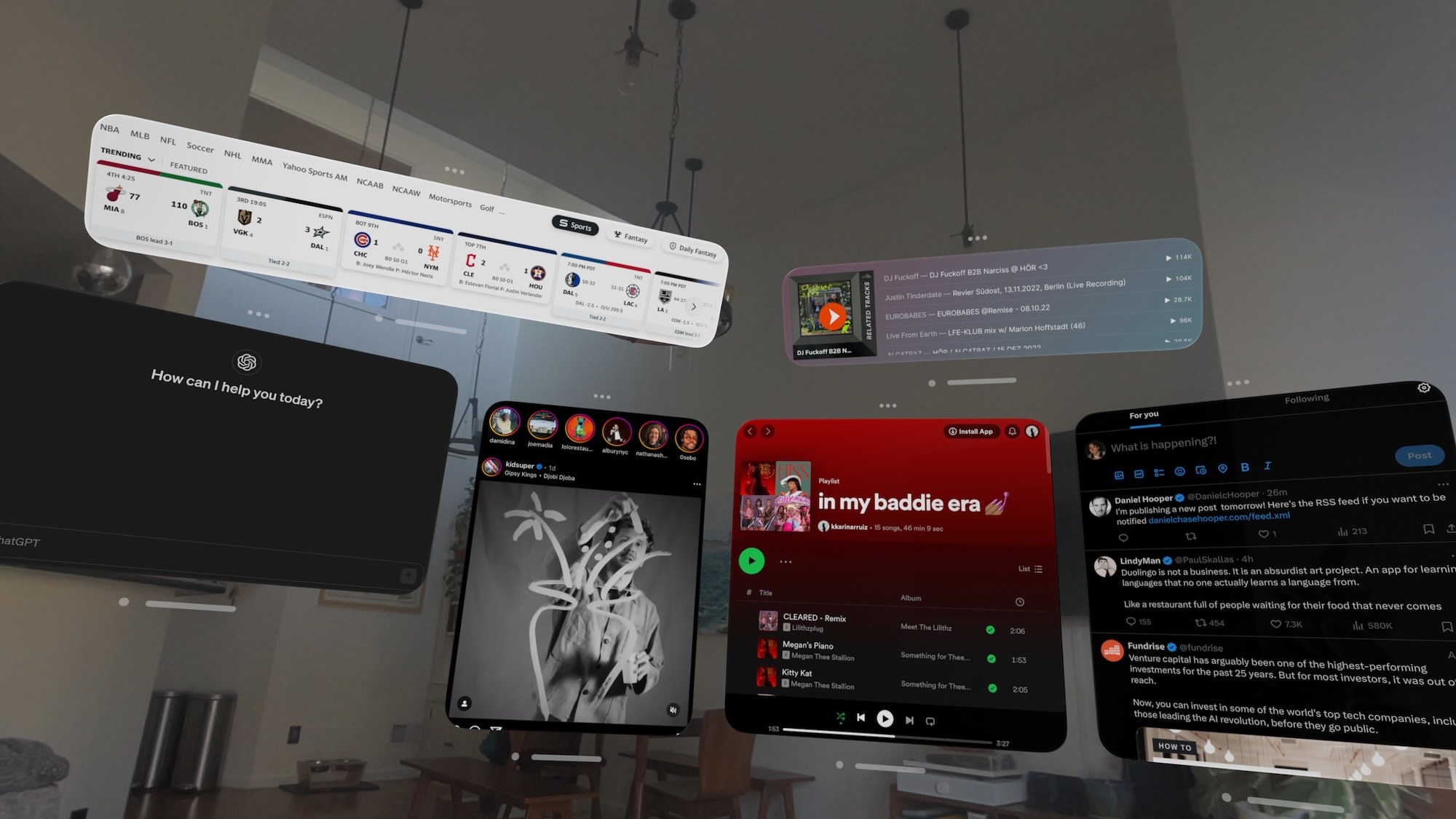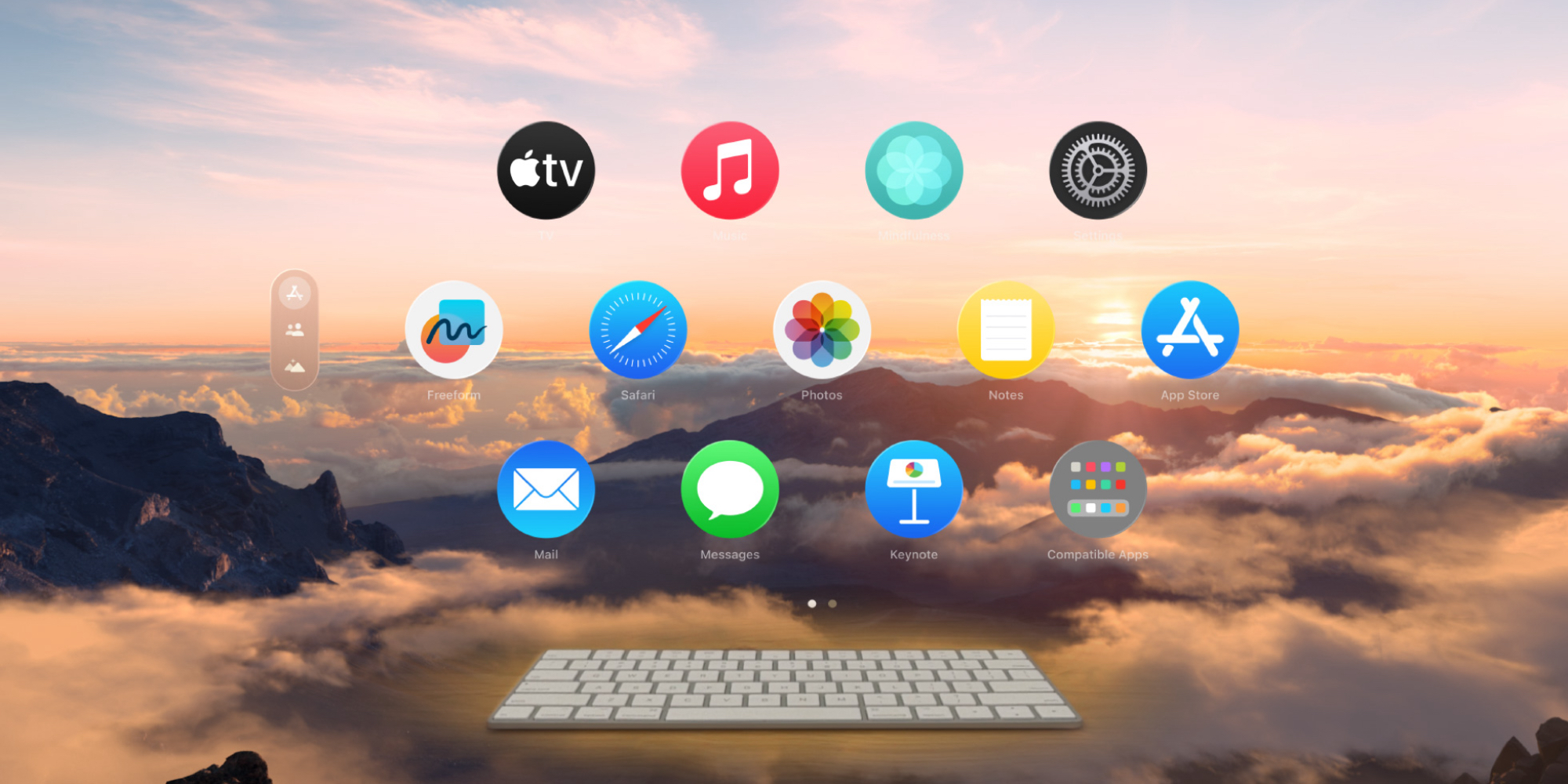
Apple’s Vision Pro has been available for over half a year. Despite an initial wave of excitement and viral buzz around its launch, these days Vision Pro discourse isn’t very positive. The device’s rumored sales struggles are often highlighted, as are its lack of compelling apps and content. It’s too early to call the Vision Pro a success or flop, but to mark six months, I’d like to explore what the device’s success ultimately hinges on. And I think it all comes down to Apple’s own words: ‘spatial computer.’
Vision Pro isn’t a VR headset, it’s a ‘spatial computer’

In the lead-up to the Vision Pro’s unveiling at WWDC 2023, anticipation was through the roof for this VR/AR headset.
When Apple enters a new product category, it usually offers something unique. But aside from creating an ultra-premium headset, it was unclear how Apple would distinguish the Vision Pro from headsets that came before it.
But in its introduction, the answer was quite clear: ‘spatial computing.’
Apple beat the drum over and over that the Vision Pro was a ‘spatial computer.’ They didn’t call it a VR, AR, or mixed reality headset. It was a computer.
Six months in, I expect the Vision Pro to live or die on those words.
Cost is an issue, but there’s a bigger core problem
Often when pundits consider the Vision Pro’s market challenges, its $3,500 price tag is the focus.
It’s as though the Vision Pro would be a hit, if only Apple made it more affordable. Say, in the $1,000 to $1,500 range.
But I don’t think cost is the Vision Pro’s main issue. It’s spatial computing.
Yes the device needs to get more affordable. Apple clearly knows that, since it’s prioritizing making a cheaper Vision device rather than a Vision Pro 2.
To achieve real success though, Apple needs to prove that the Vision Pro is actually a computer. And one that does computer-y things better than traditional alternatives.
Creating a better computer for more people

Right now, for a lot of prospective customers, Vision Pro isn’t just an overpriced gadget. It’s also a device without a compelling purpose.
Where it consistently impresses is with media. Immersive videos are absolutely incredible. Reliving memories via spatial videos is just as amazing. Heck, the Vision Pro is even great when watching standard videos and viewing standard photos.
As a media consumption device, the Vision Pro largely succeeds (at least if you ignore gaming).
But that’s not why it exists, nor is it the main way Apple has marketed it.
$3,500 for a content consumption device is a lot.
But what if the Vision Pro was a powerful computer for getting real work done?
What if doing your daily work on the Vision Pro was a far more compelling experience than what you could get with a Mac or iPad?

I fully believe that some people can get their work done on a Vision Pro today. But most can’t. And even with those who can, is spatial computing game-changingly better for them? I’m skeptical.
A lot of Vision Pro users love Mac Virtual Display. But that feature makes the Vision Pro a Mac accessory, not a Mac replacement.
The market for a $3,500 Mac accessory is very small.
But the market for a next-gen immersive computer could be significant.
Is spatial computing a gimmick, or the future?
Apple is taking baby steps toward making Vision Pro a better computer. There are several visionOS 2 features geared toward improving productivity, for example.
But there’s so much more work to be done.
Top comment by NihilRiv3r
I sold my Quest 3 and ended up getting an Apple Vision Pro. It’s amazing and such a futuristic experience, but it doesn’t do enough. I’m probably going to buy another Quest headset just for the social VR and fitness apps that don’t exist on the Apple Vision Pro.
The Apple Vision Pro needs to embrace VR and get as many cross platform experiences on it as possible. There are people that spend A LOT of money on high end setups that could be replaced entirely if the apps and games were also on Apple Vision Pro.
If they really want to avoid VR at all costs, then they need to double down on being a computer. With VisionOS 2 having proper mouse support now, let us run native Mac apps on virtual 2D screens. Pick a use case and just follow through.
It’s early days. I believe Apple is committed to the Vision platform for the long haul. But its success will depend on whether the company achieves its initial goal: creating a true computer.
If ‘spatial computing’ is a gimmick, the Vision Pro will fail.
But if it’s the future, then I hope that future doesn’t take too long to arrive.
What do you think? Can Apple deliver on the promise of spatial computing? Let us know in the comments.
FTC: We use income earning auto affiliate links. More.



Comments